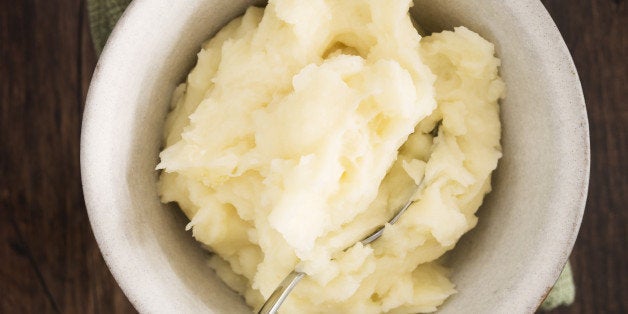
Everyone knows that crunchy carrot sticks are a less-caloric choice than, say, mashed potatoes loaded with cream and butter. And a new study shows just how the texture of these foods might also help us to discern the calorie estimations.
The research, published in the Journal of Consumer Research, shows that people tend to think that soft and smooth foods have higher calorie amounts than hard and rough foods. That's because in general, the feel of a food in your mouth (also known as mouthfeel, or "oral haptics") affects your perception of how many calories that food has -- and it could also influence how much of it you end up eating.
"This 'oral haptics–calorie estimation' (OHCE) effect is driven by the lower mastication effort and the higher orosensory perception for soft (vs. hard) and smooth (vs. rough) foods," the researchers found.
The study was conducted by researchers at the University of South Florida, the University of Michigan and Columbia University. The study included five experiments, one of which involved study participants watching some TV ads while eating bite-sized bits of brownie.
For this brownie study, half of the participants were asked to estimate how many calories they thought the brownies had, while the other half were not. Within these groups, half of the participants were given brownie bits that were soft, while the others were given ones that were hard.
Among the participants who were not asked to focus on the calorie content of the brownies, they consumed more soft brownie bits than hard brownie bits. However, among the participants who were asked to focus on the calorie content, they consumed more of the hard brownie bits than the soft ones.
It's no secret that our taste buds hold preference for fat taste. According to the book Fat Detection: Taste, Texture, and Post Ingestive Effects, "fats endow foods with some key textural properties, including viscosity (thickness) and lubricity (slipperiness or oiliness). Food texture studies focused on the viscosity, elasticity, and orientation and elongation of food particles, often in relation to food acceptance. Texture studies showed, for example, that consumer preferences for yogurts and other dairy products were driven by perception of smooth or creamy textures that depended on fat content."